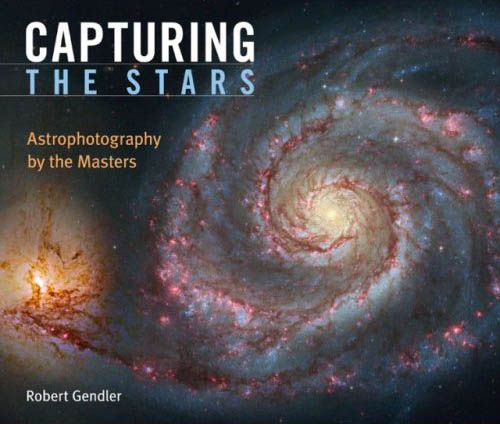Foreword: Capturing the Stars: Astrophotography by the Masters
From Capturing the Stars: Astrophotography by the Masters by Robert Gendler.
In astrophotography, unlike all other branches of this noble art, the cosmic photographer does not get to illuminate the subject, or tell the subject to stand a different way to improve the angle of view. The sky above is just “there.” The objects in it are just “there.” Not only that, the extreme light travel time from the depths of the universe to Earth, forces the photographer to view most objects not as they are but as they once were, long ago. Beyond these profound limitations, one might be further surprised to learn that the most interesting objects in the universe are so dim that the photographer does not even see in advance what the picture will become when fully exposed. Astrophotography might then be the humblest of hobbies, even while its subject draws from the most beautiful vistas there ever were.
In modern times we have no shortage of beautiful cosmic images from celebrated sources such as the Hubble Space Telescope. So why turn to an atlas chock full of images taken by amateur astronomers with their personal cameras from their suburban backyards? First, the era of affordable digital detectors greatly reduces the relative advantage that a professional telescope formerly had over amateur equipment. Second, the field of view of professional telescopes is generally quite small. The Hubble, for example, sees no more of the night sky than 1⁄100 the area of the full moon. Meanwhile, a backyard setup with a simple camera, or with a camera combined with a low-power telescope, can capture large swaths of sky, in some cases, entire constellations, revealing dim, but large-scale features within our own Milky Way that would otherwise lay undiscovered in front of our noses.
As we have known for some time, Earth rotates continuously. As these large-scale features drift by, any attempt to expose an image for more than a few seconds will blur the stars and other light-emitting objects, just as would a time lapse of car headlights along a highway. To avoid this, one must somehow compensate precisely for Earth rotation. Of course, the “clock drive” was invented long ago to solve just this problem. Some clock drives even allow you to make adjustments to follow objects, such as comets, that are themselves in motion against the drifting background sky. In all cases, the sharpness of your final image depends heavily on how well your clock drive works, especially for the longest of exposures you may require.
The camera and telescope combo operates like a light bucket. In a short, fraction-of-a-second exposure, such as what the brain does with human vision, you can detect only so much light. But with full control over exposure time, combined with the highly sensitive digital detectors used in modern cameras, you can fill your bucket with as much light as you like—exposing the scene for as long as you have patience to support, and as long as you trust the stability of your clock drive. A single image can sometimes take several minutes to expose. Others can take can several hours, still others, the most challenging targets of the night sky, may require all night.
With each added moment of exposure, gossamer, ghostlike features of a nebula or a galaxy become brighter, more delineated, more revealed. Like the sculptor in Pygmalion, where each strike of the hammer and chisel brings the subject closer and closer to life, the astrophotographer exposes the detector until the subject rises from the depths of space to become a work of art unto itself. And whether or not the nebula or galaxy comes to life, what’s certain is that, as in Pygmalion, the astrophotographer falls in love with the images themselves.
Robert Gendler’s Capturing the Stars: Astrophotography by the Masters cannot be read and viewed without feeling that these committed photographers are smitten by the universe and hopelessly enchanted by the objects it contains, while inviting the reader to be similarly taken by their splendor.


